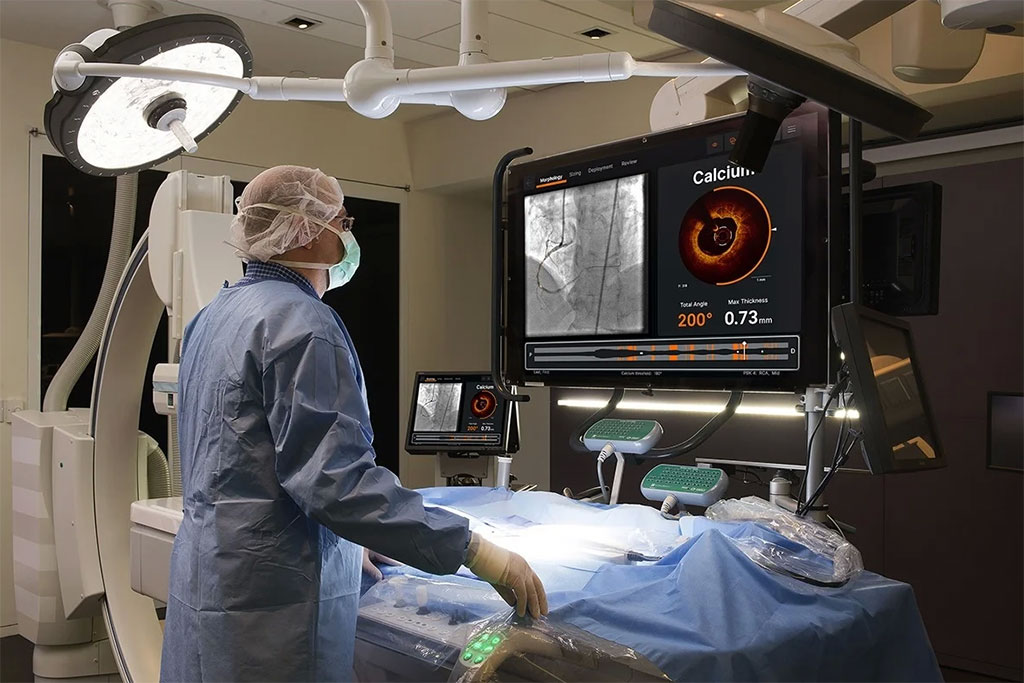AI-Powered Imaging Software Aids Coronary Stenting
By MedImaging International staff writers
Posted on 11 May 2021
A new imaging platform merges optical coherence tomography (OCT) with artificial intelligence (AI) for enhanced visualization of calcium-based blockages. Posted on 11 May 2021
The Abbott Laboratories (Abbot Park, IL, USA) OCT technology uses near-infrared (NIR) light and the Dragonfly OpStar imaging catheter to provide high-definition (HD) images from within a blood vessel, improving physicians’ assessment of blockages in those vessels and optimizing decisions related to stent selection, placement, and deployment. The system is powered by Ultreon 1.0 Software to automatically detect degree and thickness of calcification, highlight calcification arc and maximal thickness, display calcification angle and thickness values throughout pullback in real-time, and highlight calcification overlays on the vessel with co-registration views.

Image: OCT and Ultreon Software image calcium deposits in blood vessels (Photo courtesy of Abbot)
In addition, it can automatically detect external elastic lamina (EEL) and lumen to help identify landing zones for accurate stent placement; provide vessel diameter measurements; facilitate measuring of lesion length and identification of optimal user-adjusted stent landing zones; aid stent length selection through co-registration; provide side-by-side viewing of live and co-registered angio to help physicians guide precise stent deployment; and ensure optimal stent expansion and apposition by instantaneous display of expansion and apposition results.
“Increased adoption of OCT imaging, when combined with advanced technology like AI, allows cardiologists to have a more precise and measurable way of supporting patients undergoing coronary stent procedures,” said Nick West, MD, chief medical officer and divisional vice president of global medical affairs at Abbott’s vascular business. “Ultreon Software can potentially improve physician and patient experience by utilizing a systematic process, reducing variability and increasing accuracy of diagnosis and application of therapies.”
“Ultreon’s customizable user interface and AI detection will make decision-making faster and reduce procedural variability, especially for the increasing number of physicians who are learning to utilize OCT imaging over other more traditional imaging technologies,” said Jose Mª de la Torre Hernández, MD, head of interventional cardiology at Hospital Universitario Marques de Valdecilla (Santander, Spain). “The automatic display of details with Ultreon reduces uncertainty during the preparation for stent placement and allows for increased accuracy to help us deliver better care to our patients.”














